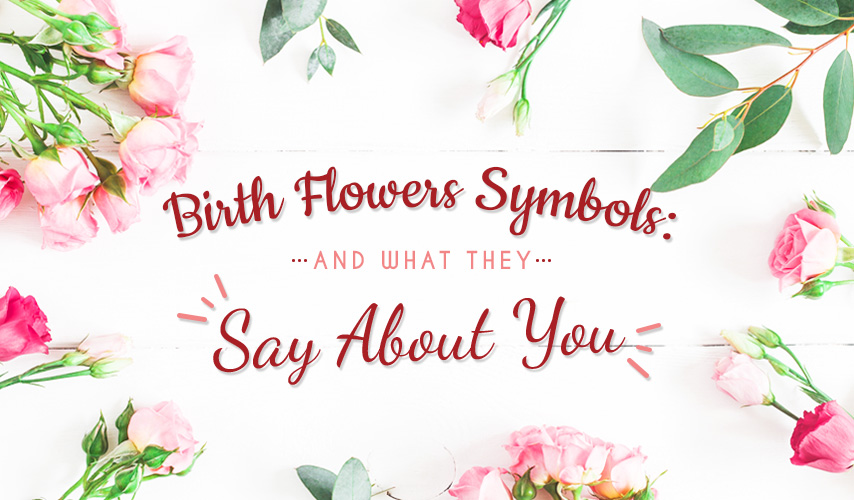Before there were emails, phone calls and instant messaging, there were only love letters and flowers as a way to communicate your love and win someone’s affection.
The language of flowers also called floriography was a well-accepted practice in the 18th century. It was in the Victorian era when people used to send flowers to convey a message that is too important to merely express in words. They were guided by a flower dictionary that explains which flowers best explain what they feel.
Today, flowers remain as meaningful as ever. But aside from being a symbol of love, blooms can also signify birthdays in each month of the year. So, what could be your birth flower?
In this article, we listed the birth flowers by month, as well as what they mean and what they say about you.
The Birth Flowers
January: Carnations
One of the earliest flowers to be cultivated, the carnation is the birth flower for January. It is only one of the few flowers that can bloom in the cold weather of the month. For many, the bloom is a symbol of love and fascination. But, it comes in many different colors, with each conveying a different meaning.
Carnations bloom all-year round. This availability has allowed it to be considered as one of the most loved flowers today.
February: Violets
Although you can be forgiven for assuming that the birth flower for February is rose, it is actually the sweet, fragrant violet that holds the title. The ancient Greeks associated the flower with Aphrodite, goddess of love and beauty thus, earning the flower a reputation of being the symbol of faithfulness and modesty.
Another flower often considered as the birth flower for the love month is the primrose, a pale yellow perennial native in Europe.
March: Daffodils
A classic symbol of spring, the cheerful yellow color of daffodils represents sunshine, joy, and friendship. This bloom also serves as a sign of unparalleled love, dating back as far as the ancient Egyptian times. It’s no wonder that it makes regular appearances in classic literature.
True, the flower that is also called daffadowndilly, jonquil or narcissus has as many different meanings as much as its names.
April: Daisy
April is represented by the daisy. Easily distinguished by its disc-shaped head and fuzzy stem, this humble flower denotes purity, innocence, and loyalty. It comes in a vast spectrum of colors – such as white, yellow, orange, pink and red, and has over 250 different varieties.
Another flower considered to be the April birth flower is the sweet pea which symbolizes gratitude and pleasure.
May: Lily of the Valley
The beautiful lily of the valley represents those born in May. The white flower, with its dainty blossom and voluminous spray, suggests humility and sweetness. It is a favorite among brides as it’s also said to signify purity and humility.
This dainty-bell-like flower is quite rare. It only blooms for a short period, making it exclusive and more exceptional.
June: Rose
A June birthday is embodied by the queen of all flowers: the rose. For centuries, the rose is identified with love and passion for its classic beauty and distinct fragrance. However, like carnations, the flower comes in a variety of colors and each carries its own meaning.
Red roses can mean passionate love while the pink ones denote grace and elegance. On the other hand, yellow roses signify friendship and optimism.
July: Larkspur
The larkspur is a sweet tribute to your loved one who celebrates birthday in July. Although the significance of this flower can differ depending on its color, it symbolizes beautiful spirit and lightness in general.
The delphinium is also regarded as the July birth flower. In general, the meadow flower is said to indicate an open heart.
August: Gladioli
The striking bloom of the gladiolus is considered the birth flower of August. It derived its name from the Latin word for little sword, on account of its sword-shaped leaves thus, associating it with strength and dignity.
The flower can also make a wonderful tribute to a loved one celebrating an August birthday since it also carries the message, Remember Me.
September: Aster
The aster is the symbol of love and daintiness and is the birth flower for September. The flower – distinguished by its fragrant and vibrant blossoms – is named after the Greek word for star. It is also used to indicate faith and wisdom.
The flower is in bloom all year round but, they are in their most vibrant in the autumn season.
October: Marigold
Set apart by its autumnal color and pungent scent, the marigold is a symbol of eternal love and October birthdays. The flower is also said to characterize a strong determination to succeed. So, if you are celebrating your day in October, you are likely as driven and passionate as your birth flower.
More than its exquisite beauty, the marigold also has a long history of being used as a cure for inflammations and skin problems.
November: Mums
The bright and beautiful chrysanthemum is cherished as the birth flower for November. It is traditionally used to signify wisdom and nobility. But, it can also be associated with innocence, purity, hope, and longevity.
The word chrysanthemum is derived from the Greek word chrysos (gold) and anthos (flowers). It is easily one of the most recognizable flowers today.
December: Narcissus
Although the narcissus takes after the ancient Greek myth of self-adulation, the flower has become a symbol of modesty, youth, and beauty. The birth flower of December is believed to attract good luck for the new year.
Apart from the narcissus, hollies and poinsettias also represent December birthdays. The two signify a happy home and good cheer, respectively.
The significances associated with flowers only prove that these blooms are not only beautiful, they also give more reasons to appreciate the nature has to offer.
What does your birth flower tell about you? Let us know by commenting below!
Read our blog for the latest and more interesting news!




